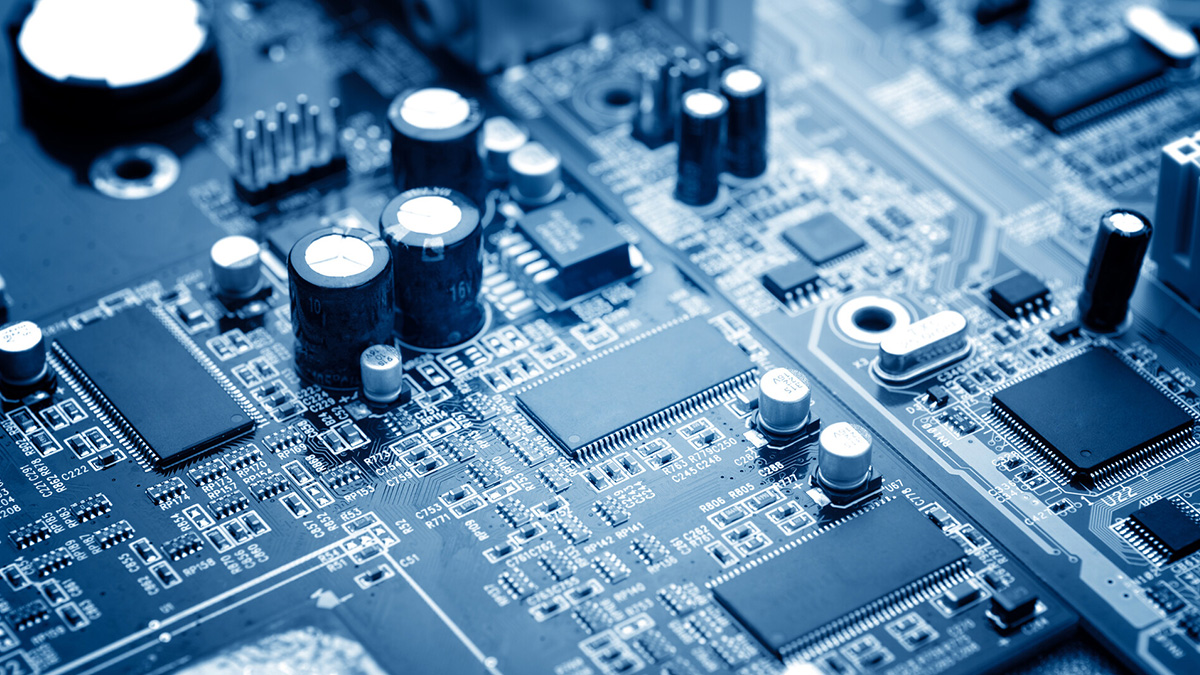Governments are actively promoting the development of regional semiconductor supply chains. AI combines emerging technologies and applications such as the Internet of Things, automotive electronics, and compound semiconductors to drive the growth momentum of the semiconductor industry.
Global Semiconductor Scale:
In 2021, the global semiconductor market was expected to increase by 25.1% year on year due to the surge in market demand, pushing the global semiconductor market to a new peak of US$550.9 billion. It is predicted that positive growth momentum will be maintained in 2022, but with supply and demand growth slowing, it is predicted that the global semiconductor market will grow by 10.1% in 2022, and reach US$606.5 billion.
Taiwan Semiconductor Scale
Taiwan's semiconductor industry leads the world in launching System on a Chip (SoC) 5G chips, and has the world's most advanced 5nm process technology. It provides customers with heterogeneous integrated chip packaging services, enabling Taiwan's semiconductor industry to fill semiconductor orders required by the global market. At a time of high demand, Taiwan's semiconductor industry was at full capacity in 2021, and even when the capacity utilization rate exceeded 100%, it immediately supplied the required semiconductor chips to the global market.
In 2020, the total output value of Taiwan's IC industry was NT$3.2 trillion. In 2021, Taiwan's IC industry was expected to grow by 25.9%, pushing the total output value to a record high of NT$4.1 trillion. The growth momentum of Taiwan's IC industry is higher than the global semiconductor market average. Looking forward to 2022, with the global market demand continuing to increase, production capacity will grow to meet the demand. Taiwan's IC industry is expected to grow by 12.0% annually, and the total output value will grow to NT$4.5 trillion. Taiwan's IC industry will maintain this momentum to lead the global market with high growth performance.
Trends in terminal electronic products:
- ARM enters the PC market. 2025 ARM-based CPU market share: 17% (PC); 20% (Server).
- Mobile phone brands develop their chips.
- 3C manufacturers enter the electric vehicle market.
Trends in semiconductor application categories:
- There was high growth in 2021, but the growth momentum will slow down from 2021 to 2025. Automotive, storage and industrial semiconductors are categories expected to have high growth momentum in the future.
- Intel developed a "neural computing chip" in an attempt to surpass the performance of existing chips. Intel's own most advanced "7nm EUV" technology has developed "neural computing chips".
- Vehicle HPC (High-Performance Computing) growth rate is extremely explosive. The global automotive HPC semiconductor CAGR from 2021 to 2025 is expected to be 212.4%. By 2025, the global automotive HPC market size will reach 8.04 billion US dollars.
Semiconductor industry chain:
The semiconductor industry supply chain closely combines upstream, midstream, and downstream manufacturing. Upstream industries include materials and equipment supply, and integrated circuit (IC) design. Midstream is mainly integrated circuit (IC) manufacturing. Integrated circuit (IC) packaging and performance testing are the downstream industries.
The microelectronics information (communication network) industry is an industrial chain type in which the supply and demand of upstream, middle, and downstream are combined. Upstream industries are integrated circuit (IC) components, passive components, and accessories manufacturing. Midstream industries produce printed circuit boards and functional modules, while downstream industries focus on application system design products. The entire manufacturing and production process combines both hardware and software technologies.
The microelectronic information (communication network) industry’s digital technology is inseparable from the semiconductor integrated circuit (IC) technology industry. The semiconductor industry and their printed circuit board hardware is the core of the microelectronic information industry. Progress in circuit board hardware technology will drive the performance of system application products. Likewise, progress in software program-related technologies will also drive the development and promotion of hardware products such as computers, laptops, tablets, and smartphones.
Semiconductor Manufacturing Mode:
The two main sectors of the semiconductor industry are Integrated Device Manufacturing (IDM) and the Foundry. The IDM model is a vertically integrated, one-stop manufacturing method combining upstream, midstream, and downstream production. It is a less flexible mode of operation but is conducive to the mass production of individual branded products.
In the foundry model, upper, middle, and lower production is distributed among several companies with each operating and producing according to its professional expertise. An integrated circuit (IC) design company specializes in circuit design, an integrated circuit (IC) foundry company specializes in IC manufacturing, and an integrated circuit (IC) packaging and testing company specialize in IC packaging and testing. It is a highly flexible operation mode, which is conducive to the small-volume and customized production of diversified products.
The introduction of new technologies such as 5G, IoT, Cloud, and IT, directly or indirectly drives the development of semiconductor integrated circuit component technology and its industrial chain.
- Benefiting from economic growth, the rise of mobile communications, and the development of cloud computing, East Asia (China, Japan, South Korea, and Taiwan) has become a hot spot for the development of the semiconductor industry:
- Taiwan has the world's leading foundries (such as TSMC, UMC), and original design manufacturers (such as Foxconn Technology Group and Quanta Computer).
- Japan is an important producer of semiconductor materials, high-end equipment, and specialty semiconductors.
- South Korea is an absolute leader in the high bandwidth memory (HBM) and dynamic random-access memory (DRAM) markets.
- China's semiconductor market accounts for about half of the global semiconductor market, and China also aims to establish a fully self-sufficient semiconductor industry.
- As the market for consumer electronics products becomes saturated, the growth of the semiconductor industry will flatten. Several emerging industries will present ample opportunities for the semiconductor industry:
In the automotive industry, safety-related electronic systems are experiencing explosive growth. By 2022, the cost of automotive semiconductor components will reach $600 per vehicle. Automotive semiconductor suppliers will benefit from strong demand for automotive semiconductor equipment such as microcontrollers, sensors, and memories. Over the next decade, developments in automation, electrification, networking, and security systems will drive the number of semiconductor components used in automotive electronics and subsystems to grow.
The artificial intelligence semiconductor market is highly competitive, not only at the application level but also at the semiconductor chip level with different architectures competing with each other. To improve efficiency and reduce costs, the application of artificial intelligence chips in data centers continues to grow, and cloud technology has thus become the largest market for artificial intelligence chips.
- Mergers and acquisitions in the semiconductor industry have reached a peak, and vertical integration has gradually become the focus of the industry. Japan and South Korea are trying to revive their semiconductor industries through acquisitions, at a time when an ongoing trade war and intellectual property disputes will hamper China's global investment spree.
- China has become an important source of revenue for the world's major semiconductor manufacturers, many of which receive more than half of their revenue from China. Multinational companies intending to enter the Chinese market should consider a combination of factors such as policy, technology, marketing, logistics, and global strategy.
During the pandemic, there was a global shortage of raw materials. Cities were shut down in various places, and the imbalance between supply and demand in the global semiconductor industry became increasingly serious. The global demand for semiconductor chips continued to rise in 2021 and 2022, pushing up global semiconductor industry revenue. However, wafer manufacturing could not meet the demand, resulting in shortages of semiconductor wafers. This has become the new normal in the global industry and it is estimated that this situation will continue for at least one or two years.
In the face of geopolitical developments and the imbalance between global semiconductor supply and demand, governments around the world are actively promoting the development of regional semiconductor supply chains. Under the active expansion of the production capacity of fabs, it is expected that the supply and demand situation will ease from the second half of 2022 to 2023. In addition, AI combined with emerging technologies and applications such as the Internet of Things, automotive electronics, and compound semiconductors will drive the continued growth of demand for more types and quantities of semiconductor components, becoming the main driving force for the growth of the semiconductor industry.




.jpg)









